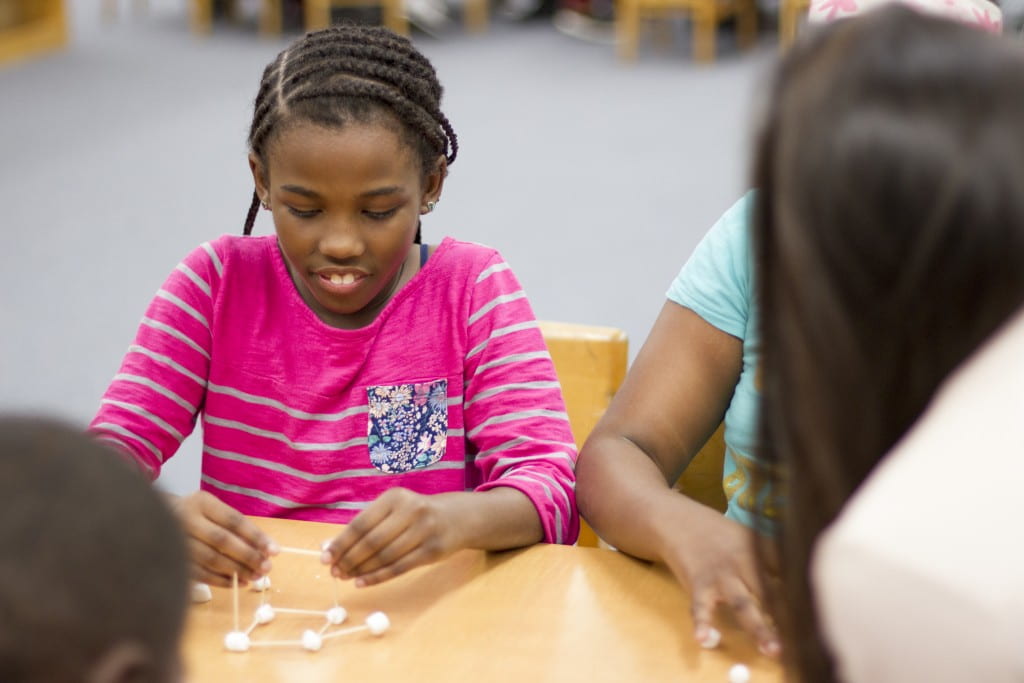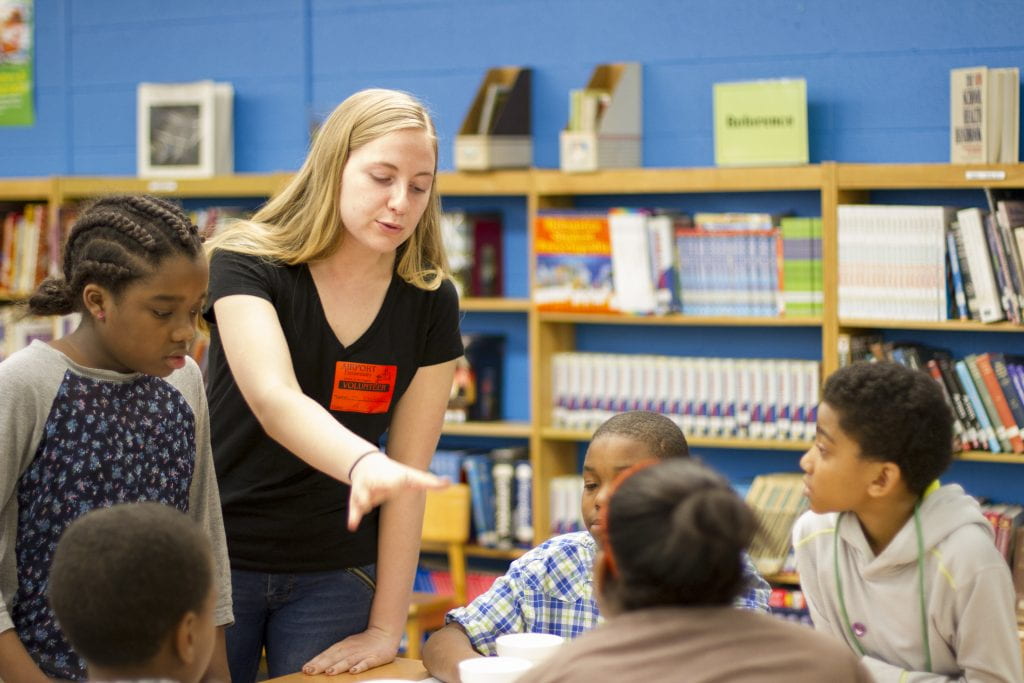
With the help of toothpicks, marshmallows and some sticky fingers, a group of Airport Elementary students from Ferguson-Florissant School District stepped into the shoes of engineers for an afternoon.
The K-12 Ambassadors from Washington University in St. Louis joined an initiative at the school to help connect young learners with more opportunities in science, technology, engineering and math (STEM).
To kick off the initiative, three university students spent an afternoon in the fourth and fifth grade to help young students imagine themselves as STEM professionals by presenting them with a puzzle.
The challenge was to build a bridge, using only toothpicks and marshmallows. The grand prize: bragging rights.
The students huddled in groups distributing the toothpicks and discussing the best way to build the tallest and strongest bridge.

“They were very energetic and eager to show me and the other volunteers what they were making and tell us how they had strategized to accomplish the challenges we gave them,” said Laura Motard, a freshmen at the university and K-12 Ambassador. “It seemed to me that they all genuinely had fun doing the activities, which was very rewarding.”
At one point, the work of one group was halted when a young builder flung out his hands, saying “I have an idea!” As the student explained his stroke of genius, understanding lit the eyes of the other group members, who quickly shifted their course to try the idea.
As the groups worked, the K-12 Ambassadors moved between tables, helping along the way. Motard explained to one group the concept of evenly distributing the bridge’s weight over many points in the structure, much like a person lying on a bed of nails.
The K-12 Ambassadors, however, played another role for the students in addition to engaging them in a STEM challenge.
“I think it is important for college students to work with younger students because of the role we can play as mentors,” said Delaney Earley, a freshman K-12 Ambassador.
“Since we as college students already have the attention and respect of students younger than us, it is important for us to use our time with them to promote learning and continuing their education,” Earley said. “And hopefully, we can even introduce them to new concepts or ideas to keep them excited about school.”
As the clock ran down, students scrambled to put the final pieces in place on their bridges. In the end, the structures were measured, the victor chosen and the challenge brought to a close.
Despite the short time spent with the students, the impact was clear as the student filed out of the classroom, discussing their bridges. Motard said that her ultimate goal was to connect the young students with their futures, helping them see all the opportunities that were before them in school and beyond.
“As long as they know that someone believes in them and supports them in pursuing whatever their dreams may be,” Motard said, “I think that I would call that a success.“
May 2015 | by, Gennafer Barajas